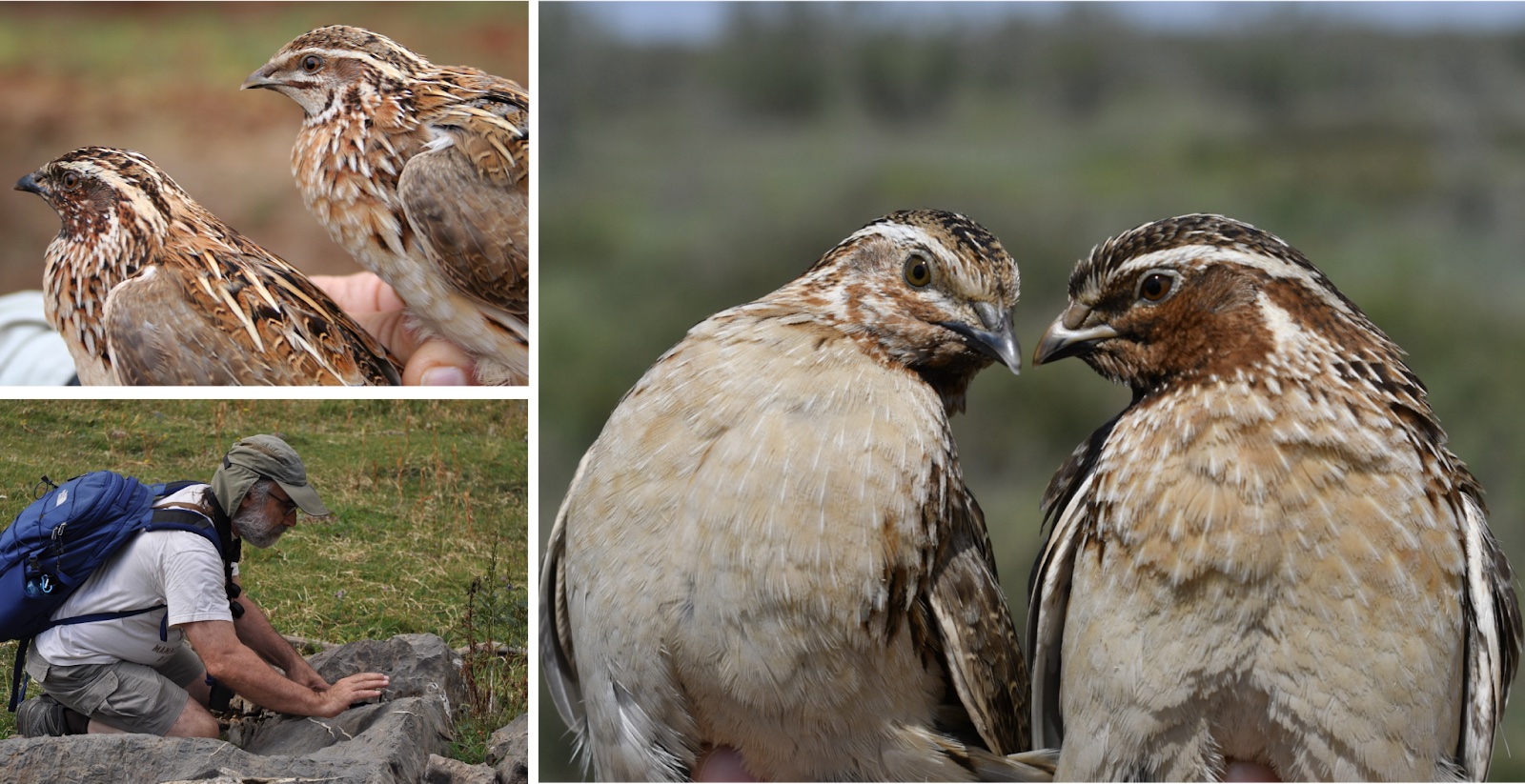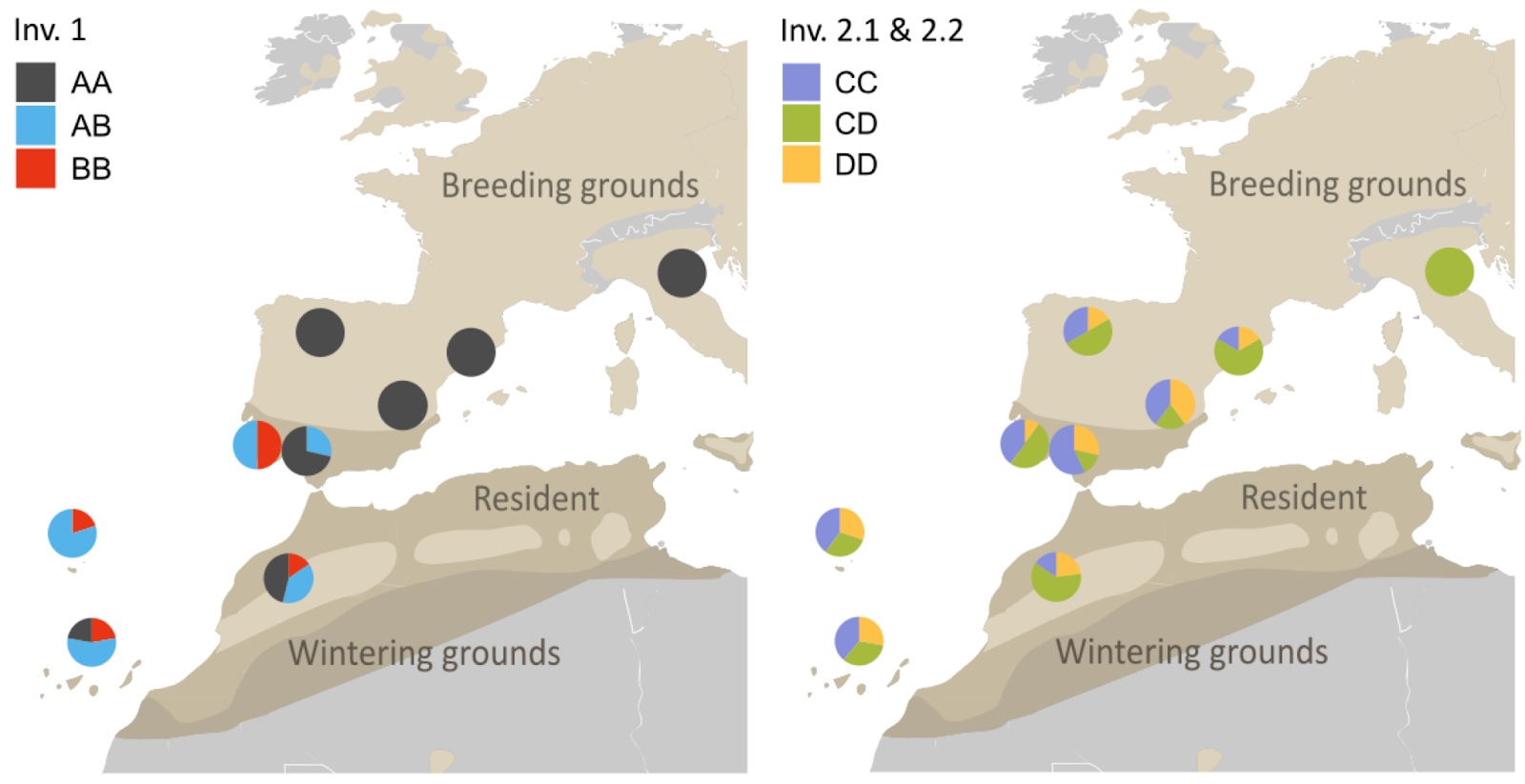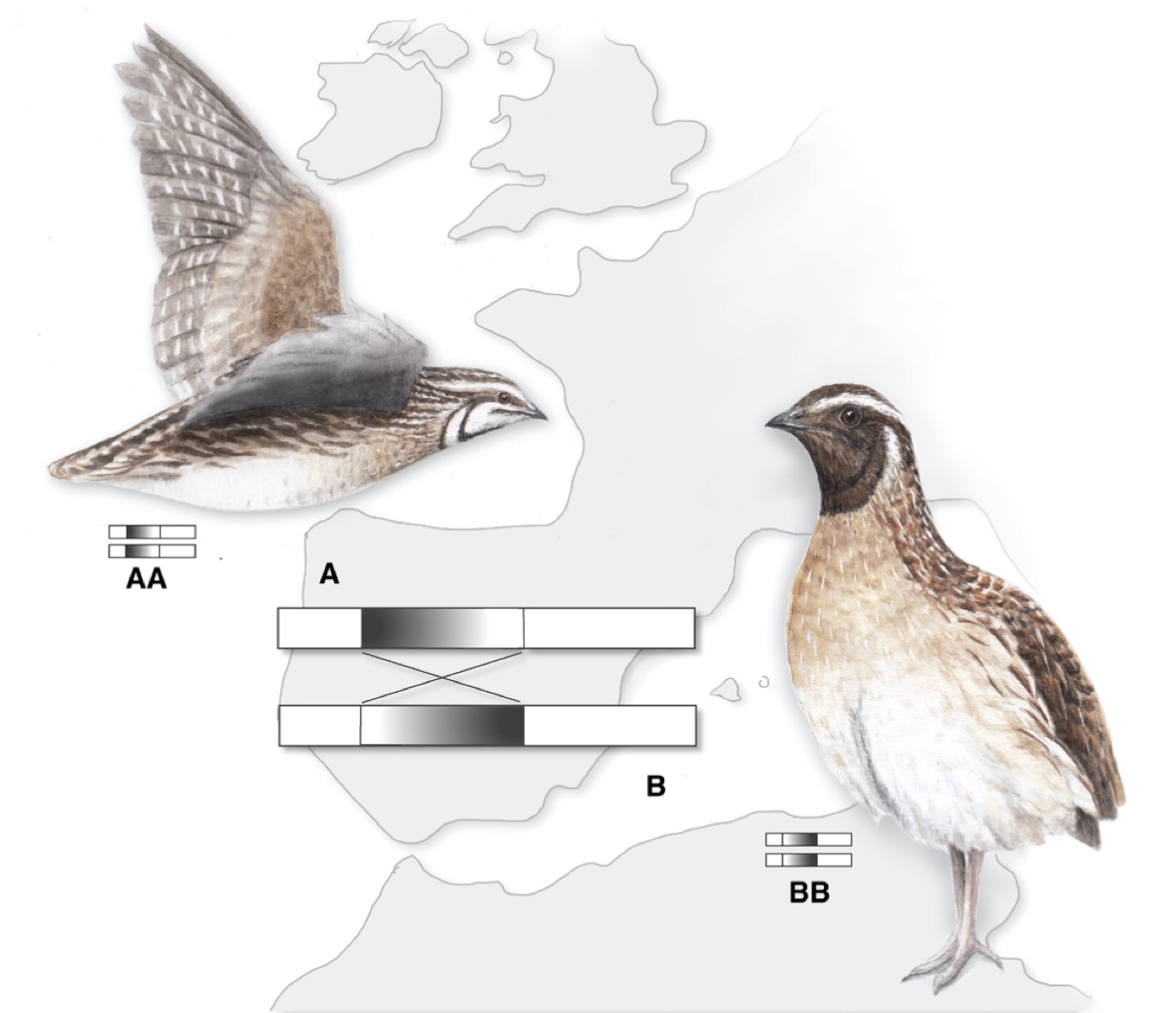Hidden Genomic ‘Engines’ Drive Evolution in the Common Quail
Published:
Evolution often hides its secrets in unexpected places — and the seemingly ordinary common quail is proving to be a treasure trove of genomic surprises. In a recent paper published in Molecular Ecology, we uncovered how ancient chromosomal rearrangements are shaping the evolution of this widespread bird, particularly in island populations. This research, conducted in collaboration with the CONSEVOL group led by Carles Vilà, builds upon previous findings and significantly expands our understanding of how large sections of flipped DNA, known as chromosomal inversions, drive adaptation in the common quail (Coturnix coturnix).

Two common quails captured in the same location exhibit striking throat color variation. Co-author J.D. Rodríguez-Teijeiro (bottom left) has spent decades studying these birds. Photo credit: Carles Vilà.
Uncovering Hidden Genomic Complexity
While prior work by the CONSEVOL team had identified a large inversion on chromosome 1 (Inv1) in common quail populations, particularly in the western edge of their range, our latest study provides a much deeper characterization of this inversion and uncovers additional, equally fascinating, genomic rearrangements. Using a newly assembled, high-quality de novo genome of the common quail, we identified two previously unknown, linked inversions on chromosome 2 (Inv2.1 and Inv2.2). These inversions, like Inv1, are notably large—collectively, they span up to 15.6% of the quail genome—and remarkably old, dating back over a million years.
Island Evolution: A Genomic Twist on Darwin’s Finches
The presence of these inversions, particularly Inv1, has profound implications for our understanding of evolution in a species known for its high mobility. We assumed that the quail’s migratory behavior would homogenize its genome across continents. Instead, we found genomic ‘islands’ evolving independently in the Atlantic archipelagos — a modern-day echo of Darwin’s finches, but playing out at the DNA level. Inv1 dominates populations in the Canary Islands, Madeira, and the Azores, where it restricts gene flow with the mainland. This genomic isolation allows island quails to develop unique traits like darker plumage and rounder wings, fine-tuned for their environments.

The Inv1 inversion (left; AA = non-inverted, BB = two inverted copies) is concentrated in Atlantic islands, while Inv2.1 and Inv2.2 (right; CC = non-inverted, DD = two inverted copies) are widespread. This suggests distinct evolutionary pressures in island vs. mainland habitats. Adapted from Ravagni et al., 2025 (Fig. S8).
Time Capsules of Evolution
Chromosomal inversions act like evolutionary time capsules. By suppressing recombination, they preserve entire blocks of DNA as single inherited units. Over millennia, these regions accumulate adaptive mutations far faster than the rest of the genome. Our analysis revealed a striking pattern: inversions harbor a higher proportion of non-synonymous mutations—changes that alter proteins—suggesting relaxed purifying selection. In essence, inversions lock in beneficial genetic changes, accelerating adaptation.

Quails with two inverted Inv1 copies (BB) have darker throats, larger bodies, and reduced flight efficiency. Adapted from Ishigohoka & Liedvogel, 2022 (Fig. 1). Illustration: Corinna Langebrake.
Rethinking Mobile Species’ Evolution
This discovery overturns assumptions about highly mobile animals. Even in a species that spans continents, evolution carves out genomic “islands” where unique adaptations thrive. Our de novo genome assembly—built from scratch rather than relying on reference genomes—was key to uncovering this hidden complexity. Traditional methods might have missed these structural variations, but our approach revealed how inversions partition the genome into distinct evolutionary trajectories.
Conservation Implications
These findings show how evolution can operate in cryptic ways, with genomic architecture playing a role as pivotal as natural selection. For conservation, this means island quail populations may represent unique evolutionary lineages shaped by inversions like Inv1. Protecting these genomic “engines” could be critical for preserving the common quail’s adaptive potential in a changing world.
---
Publication details
Ravagni, S.*, Montero-Mendieta, S.*, Leonard, J.A., et al. (2025). Large inversions shape diversification and genome evolution in common quails. Molecular Ecology, 34(9), e17740.
* Equal contribution.
